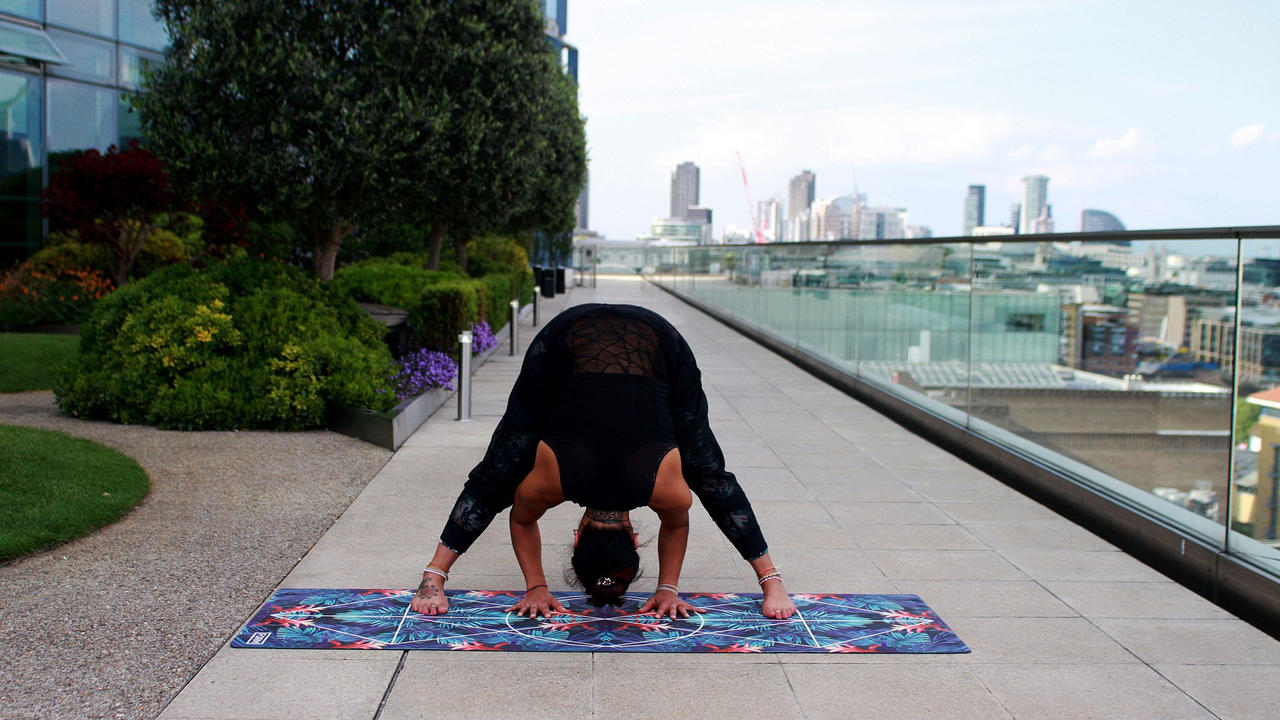A simple hack to improve your balance through flexibility

As we get older the range of motion around our joints, along with our muscle flexibility gradually declines. Loss of flexibility can eventually lead to issues with balance, increased progression of some disabilities, greater risk of falls, and a reduced ability to complete certain tasks.
Like sarcopenia (the gradual loss of muscle mass over time), loss of flexibility is a usual part of aging. Although flexibility is joint-specific, meaning that each joint has its own range of motion based on the type of joint and many other factors, aging typically leads to increased stiffness in all of our joints. When our joints become stiffer, we lose the ability to move them through a full range of motion.
THE ISSUE
Where is this the biggest problem in women over 50? Believe it or not, one of the most significant areas of range of motion loss is in the ankle. Women between 50-85 years old can lose as much as 50 percent of their ankle range of motion. Although this may not seem like a big deal, hear me out on this one.
Clearly, limited range of motion in the ankle can pose a problem for simple tasks like walking. But imagine this: You are standing on a city bus, holding on to the pole.
If the bus is not too bumpy or doesn’t stop suddenly, you’ll probably be fine. But as soon as the bus encounters any sort of bump, think about how you will correct yourself. Your first reaction in balance typically comes from the ankle; think about how you would sway slightly back and forth to right yourself.
If you have limited range of motion at the ankle, you now have to stabilize yourself from bending at the hip, or if the bump is big enough, by taking a step. Although this may not seem important, being able to correct our position by bending at the ankles is one of the safety features of our balance system.
When you are forced to make bigger movements for a smaller bump, you are more likely to lose your balance. We have all sorts of similar challenges to our balance, that our body is responding to all day long. These challenges usually go completely unnoticed.
When we gradually lose range of motion, righting ourselves without falling becomes a bigger issue. Many women are surprised by falling, but small changes in strength, balance, and flexibility over time can contribute to how we are able to correct ourselves when our balance is challenged.
WHAT CAN I DO?
Increasing your overall flexibility is one of the easiest ways to improve how your body is aging. If you are not ready to begin a more structured exercise program, or you have ignored stretching in the past (my hand is up on this one), if you are over 50, stretching should become part of your regular routine.
Taking on a regular program of stretching can also improve your postural stability and correct muscular imbalances, which is important in both active and non-active women – and, if you have chronic pain or a chronic neuromuscular issue (e.g., arthritis or MS), regular stretching can help you manage your condition.
WHAT TO CONSIDER
As always, I want to provide you with the best way to go about making this change.
Here’s what you need to know:
1. Make sure to think about precautions prior to stretching. It’s important that if you have had a recent injury that you talk to your doctor or physiotherapist prior to starting a stretching program. If you have known or suspected osteoporosis (women over 65) you should be also checking with your doctor.
2. Stretching benefits can be both immediate and long-term. Stretching increases range of motion around a joint immediately but in order to have consistent changes in range of motion, a stretching program has to be performed 2-3 days a week for at least a month. Stretching every day is better yet.
3. There are many different methods of stretching. Probably the one that you are the most familiar with is static stretching, in which you hold a stretch in one position in order to lengthen the muscle. Dynamic stretching is when you move gradually from one position to another to increase reach or range of motion after several repetitions.
4. It’s best to stretch an already warm muscle. There are two types of warm-up – general and specific. A general warm-up (e.g., a short walk) raises the core body temperature and prepares the muscles, allowing them to contract and relax more efficiently.
A specific warm-up involves doing dynamic movements and prepares the muscles to “fire” in a specific way they will be asked to do in an exercise session or sport.
5. Holding a stretch should never hurt. When you are holding a static stretch you should feel tightness only. Usually, we recommend that stretches be held for up to 30 seconds but if you’re a woman 65 or older, it’s recommended that you hold a stretch for 30-60 seconds.
6. It’s best that you target your whole body. This includes shoulders, chest, hips, front and back of your legs, and ankles.
For ideas about what this might look like, you can download a copy of my free stretching guide below.
Happy stretching.
Your sister in health,

Learn how to love your Midlife
I have a limited number of spaces for new coaching clients. Get personalized support to manage weight, build strength, and improve your confidence to help you live your very best midlife.
We hate SPAM. We will never sell your information, for any reason.


